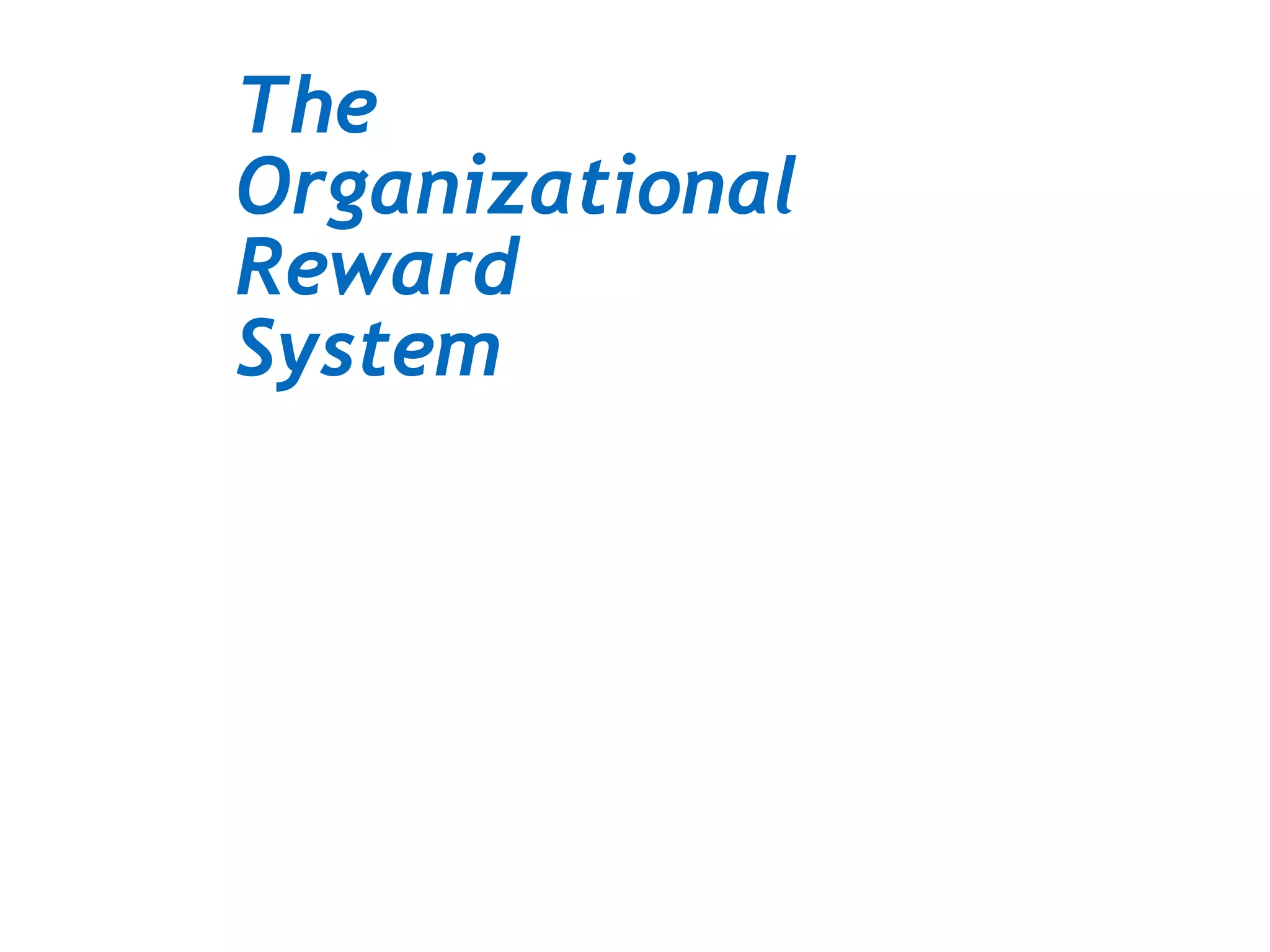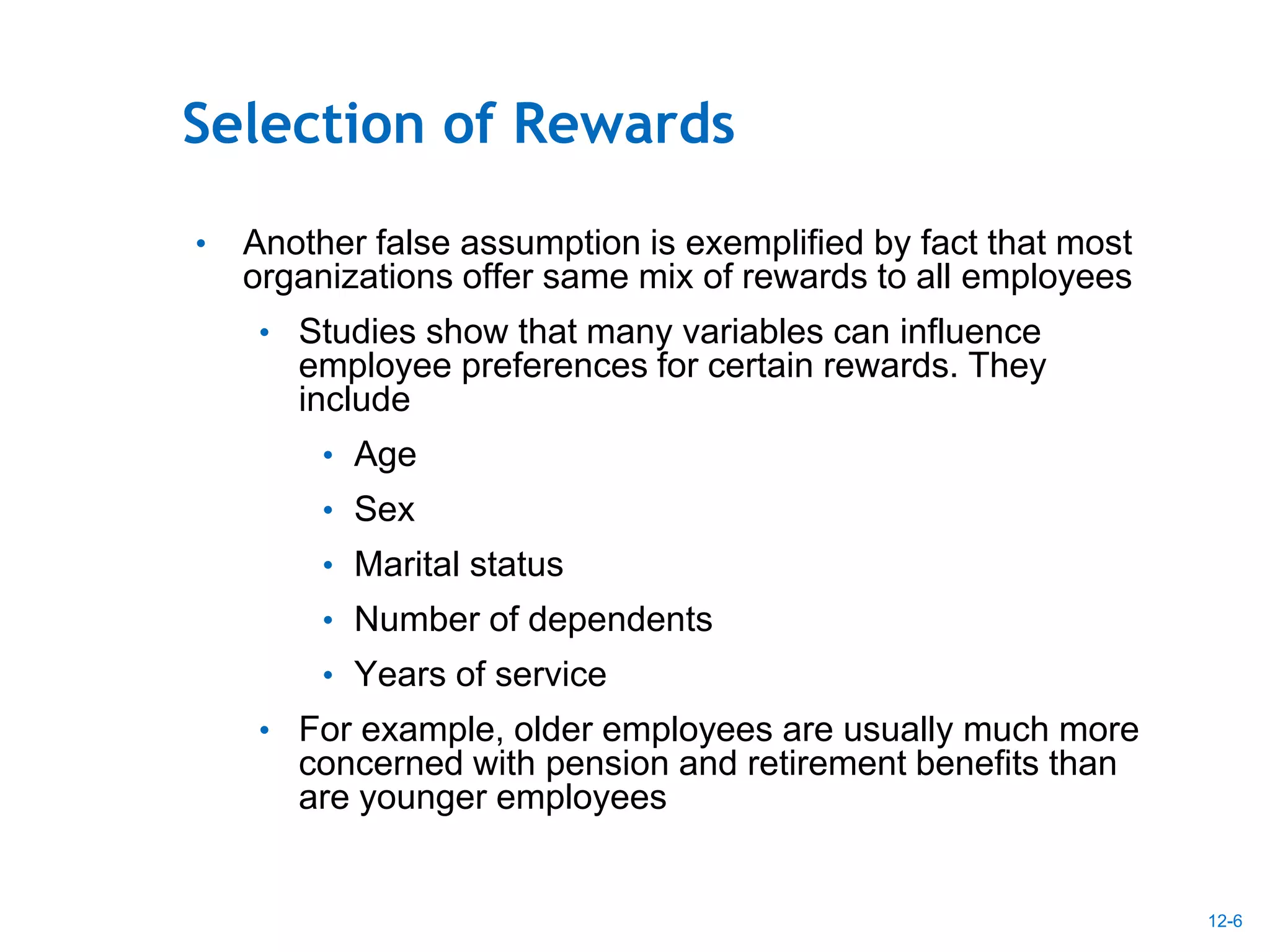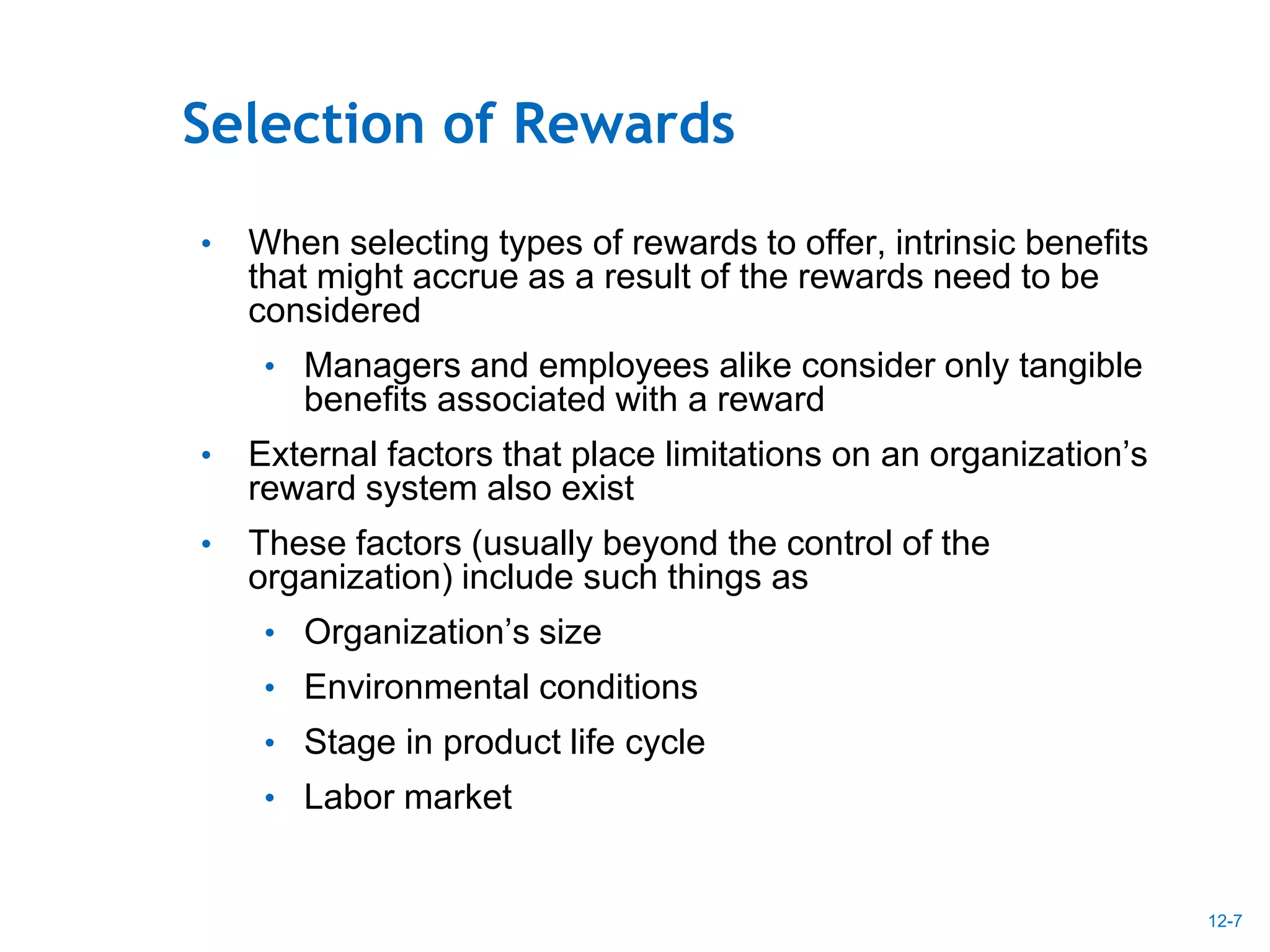The document discusses organizational reward systems and their components. It defines intrinsic and extrinsic rewards, and explains how rewards should relate to employee performance. While pay is an important extrinsic reward, other factors like flexibility and job satisfaction are also significant. The role of the human resources manager is to ensure the reward system is fair, clearly communicated, and addresses the needs of a diverse workforce.























